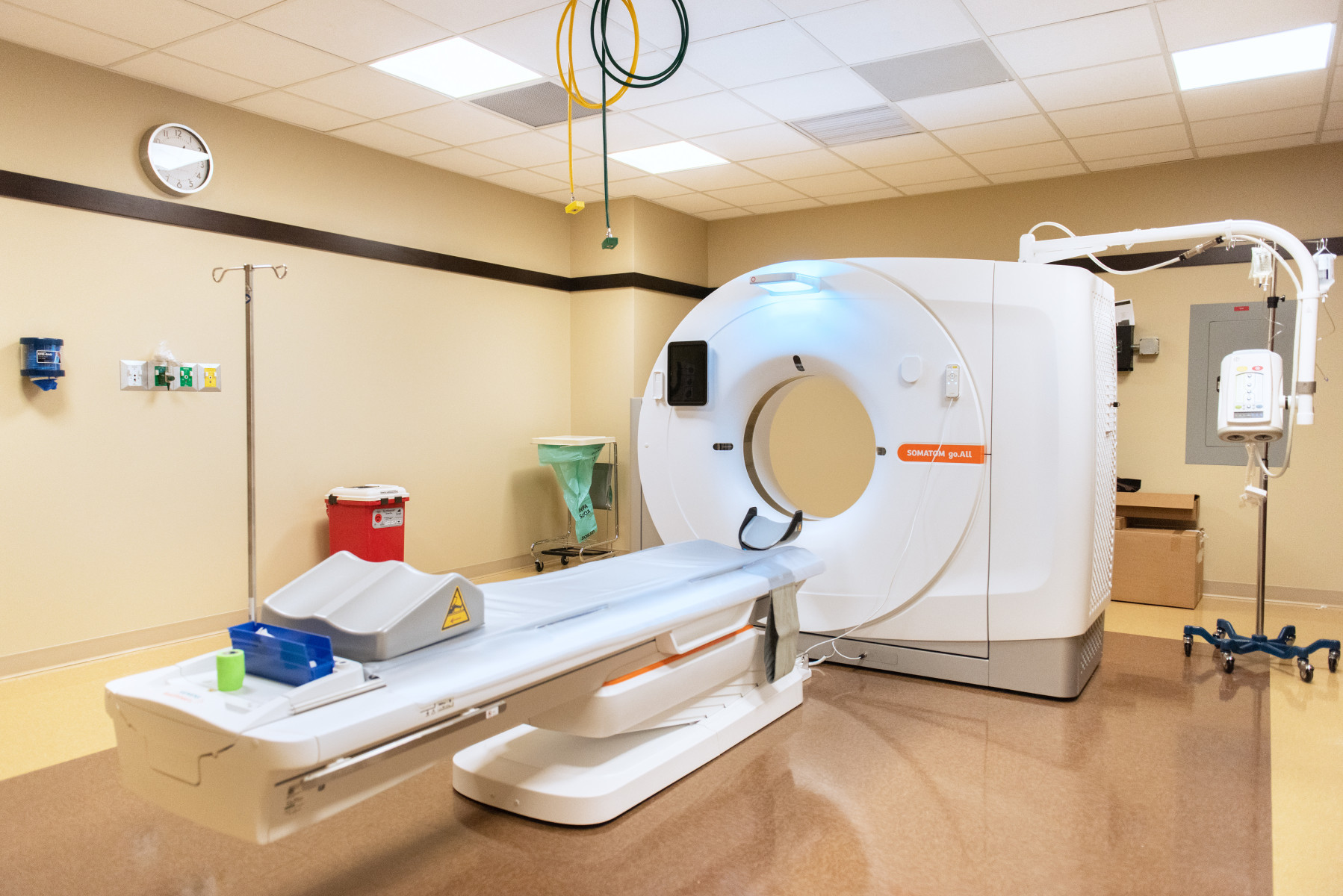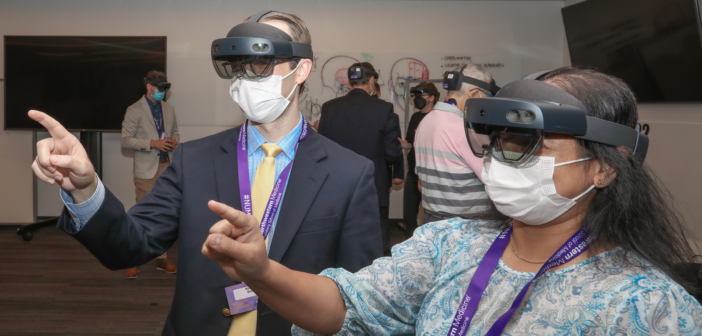
After more than a year and a half of upheaval caused by the COVID-19 pandemic, which led to a significant restructuring of medical education, critical lessons learned from the experience were shared at Feinberg’s 11th annual Medical Education Day, held Friday, October 8.
The pandemic led to several significant adaptations to the delivery of medical education. The restrictions forced didactic educators to quickly adapt curricula for remote learning, and clinical educators to incorporate distancing and masking requirements into clinical education.
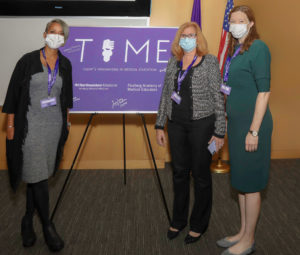
Now, as vaccines have made in-person education viable again, lessons learned during the pandemic may forever change medical education, making it more flexible and accessible than ever before. This spirit of constant improvement is alive and well at Feinberg, according to Marianne Green, MD, the Raymond H. Curry, MD, Professor of Medical Education and vice dean for education.
“Medical education is a true calling, and when you look at the quality of students and physicians we graduate from this institution, it’s in large part due to everyone in this room, to the faculty and staff involved in medical education,” Green said.
At the same time, certain negative aspects of medical education persist as they were pre-pandemic, including the harmful impact of unconscious bias and microaggressions, according to Kimberly Manning, MD, professor of Medicine at the Emory University School of Medicine and Medical Education Day keynote speaker.
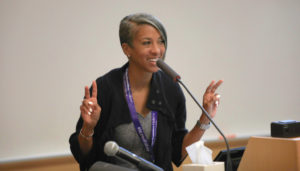
Manning, introduced by Mary McBride, MD, MEd, associate professor of Pediatrics and Medical Education, and director of the Feinberg Academy of Medical Educators (FAME), expounded on strategies to deal with incidents of bias; what medical professionals and educators can do in the moment, what they can do afterwards, and how a more active approach to incidents can help keep under-represented people in the faculty pipeline.
“Why do people fall out of the pipeline? Some of it is these little moments that hurt us,” Manning said.
When approaching incidents of bias or microaggressions, Manning uses an approach she calls the “Five D’s”: display discomfort, direct, distract, delegate or delay.
“Sometimes, just displaying discomfort to affirm others’ experiences can be enough,” Manning said. “But, I want you to pay attention to where you are in the hierarchy: As an attending physician, it’s my job to notice what happens, evaluate what happened and then assume responsibility.”
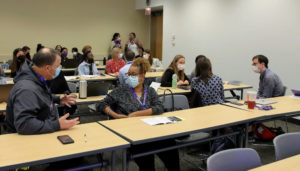
This bias presents in other ways as well, such as in evaluations of residents or students authored by attending physicians. One workshop used real evaluations and asked participants to identify signifiers of gender bias, including a description of a male student as “easygoing.”
“If it was a female student, would they have been described as ‘unassertive’?” asked Kirsten Loftus, MD, assistant professor of Pediatrics in the Division of Emergency Medicine and a leader of the workshop.
Loftus, along with Anisha Kshetrapal, MD, instructor of Pediatrics in the Division of Emergency Medicine, and Karen Mangold, MD, associate professor of Pediatrics in the Division of Emergency Medicine and of Medical Education, recommended that clinical evaluations focus more on performance and less about personal characteristics, which often creep into evaluations of female students.
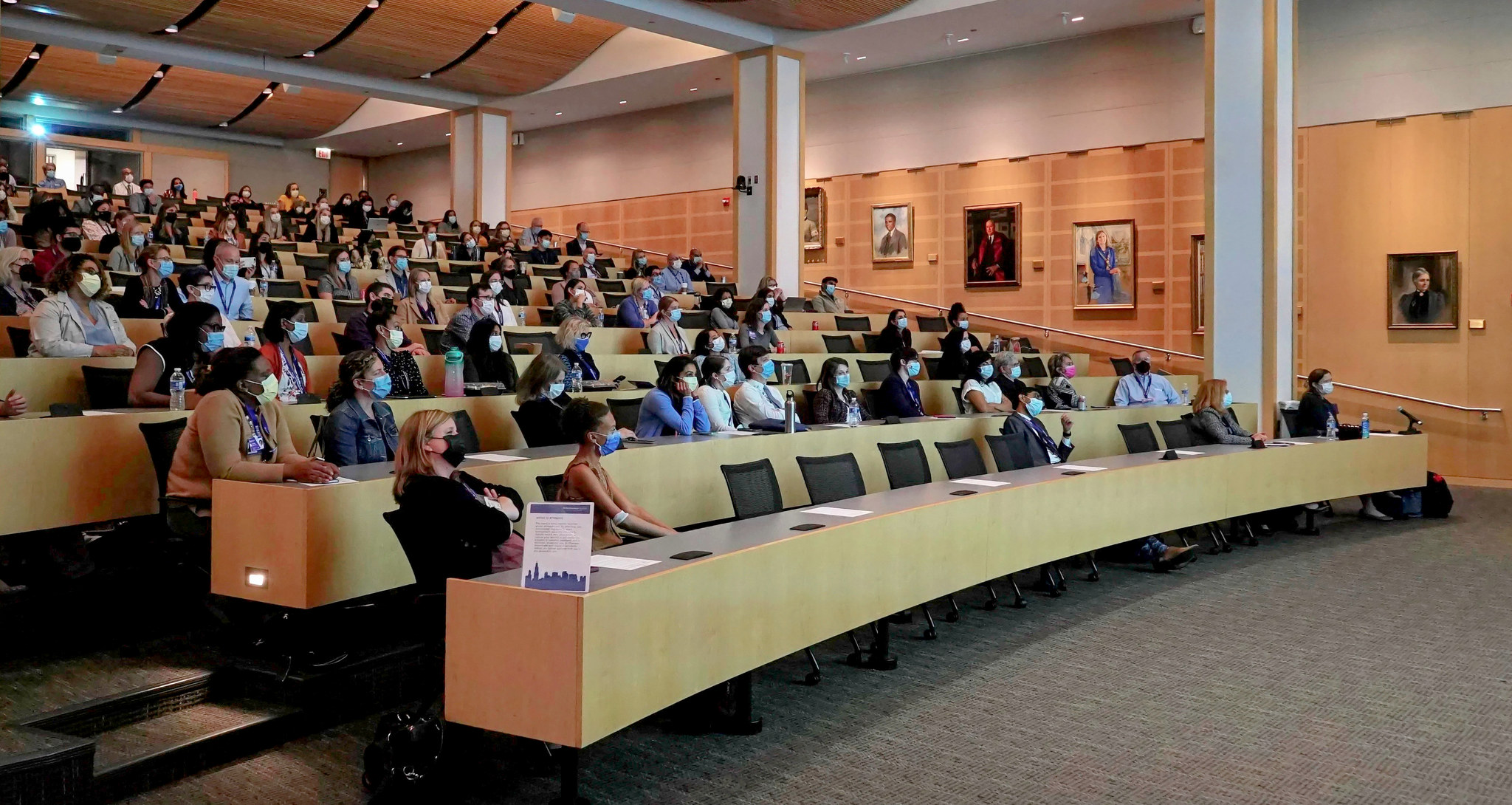
Another focus of Medical Education Day focused on how medical education can take advantage of new technology and modalities of instruction.
Technologies such as the Microsoft HoloLens — a mixed-reality headset — were on display during a workshop session, and participants experienced a virtual anatomy lesson that allowed them to interact with virtual anatomy objects in an open space.
Yevgen Chornenkyy, MD, a third-year resident in pathology, created first-person tutorial videos to instruct incoming residents how to properly sample tissue specimens. A survey demonstrated that watching these videos improved pathology residents’ confidence in performing these samplings, especially among first-year residents.
“We took our inspiration from first-person cooking videos, like you’d see on Facebook or Instagram,” Chornenkyy said.
In an awards ceremony, Green and McBride honored several faculty with the John X. Thomas, Jr. Best Teachers of Feinberg Award and recognized recently promoted faculty, new members of FAME, and exemplary faculty, residents and fellows. In particular, Larry Cochard, PhD, former associate professor of Medical Education, received the John X. Thomas, Jr., Lifetime Achievement Award.
Students are also critical partners in their education and have created a number of programs to expand their formal curriculum. These programs were recognized by the Student Senate Executive Board with Student Senate Awards.
John X. Thomas, Jr. Best Teachers of Feinberg Award Winners
- Northwestern University Prosthetics-Orthotics Center (NUPOC): Chad Duncan, PhD, adjunct associate professor of Physical Medicine and Rehabilitation
- Doctor of Physical Therapy (DPT) Program: Rachel Tappan, PT, DPT, assistant professor of Physical Therapy and Human Movement Sciences and of Medicine in the Division of Pulmonary and Critical Care
- Physician Assistant (PA) Program: Marissa Liveris, MMS, PA-C, instructor of Medical Education in the Physician Assistant Program
- Phase 1 MD Curriculum: Suzanne Schmidt, MD, associate professor of Pediatrics in the Division of Emergency Medicine and of Medical Education
- Phase 2 & 3 MD Curriculum: Stephen VanHaerents, MD, assistant professor in the Ken and Ruth Davee Department of Neurology Division of Epilepsy and Clinical Neurophysiology and of Medical Education
- Education-Centered Medical Home (ECMH) Preceptor: Toshiko Uchida, MD, associate professor of Medicine in the Division of General Internal Medicine and Geriatrics and of Medical Education






